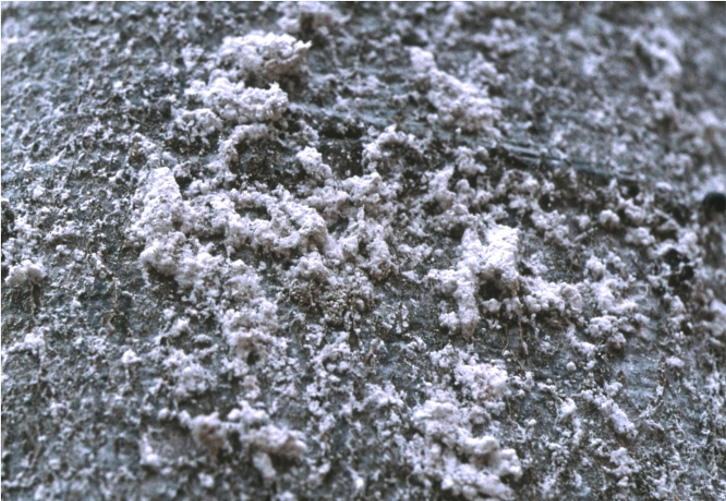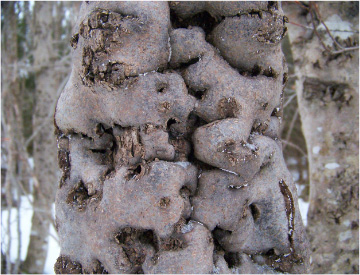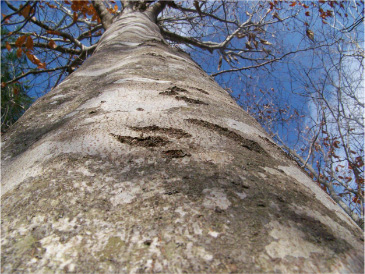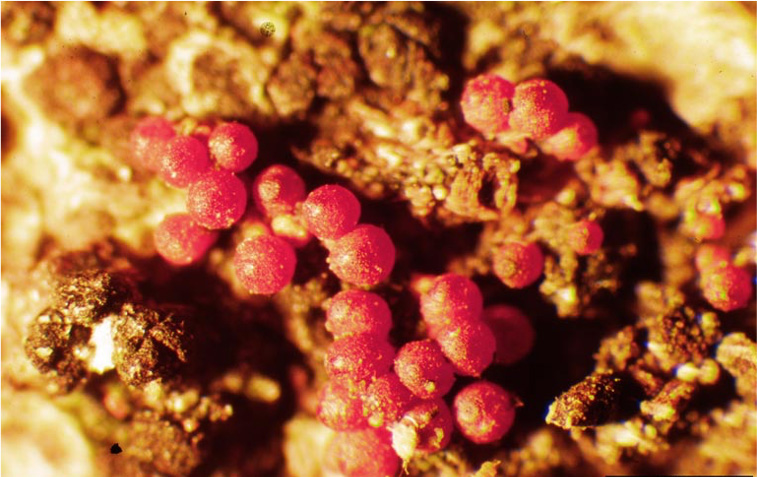Disfigured Beech trees are the result of a combination of the exotic Beech Scale insect and two fungus species, one of which (Neonectria faginata) may also be exotic. Beech Scale insect is only 1 mm long and usually covered by a whitish, cottony wax secretion that damages the tree’s bark. Fungi, invisible to the naked eye, infect damaged trees and often leave severe crater- or target-shaped scars.
Affects the vast majority of beech trees in Nova Scotia, which are found scattered in mixedwood and hardwood forests, predominantly on drier ridges and hilltops. Trees are usually weakened and often die. If trees persist, it is often by root suckering, which can result in a dense shrubby forest that is both ecologically and economically unproductive. An important tree species of the Acadian forest which once dominated many hardwood stands has been greatly affected by this disease.
Likely hosted on a European Beech tree planted in the Halifax Public Gardens in 1890, when the disease was also first recorded in North America.

Spots of white, cottony secretion on bark; crater- or target-shaped scars on bark.




Towering Beech once grew all over Nova Scotia – sometimes living as long as 300 years!
About one in 100 Beech trees remains disease-free. This is likely due to genetics. If you have healthy Beech trees in your woodlands, let them disperse their seeds and root suckers so that these good genetics spread and help the species recover. Use local wood products to avoid the long-distance transportation of insects and pests from faraway timber and firewood. Encourage government and industry to do everything in their power to prevent other insects and diseases from entering our province and harming our forests. If you spot invasive species, report the location to iNaturalist, or to the Invasive Species Alliance of Nova Scotia at www.nsinvasives.ca.
Join our mailing list.